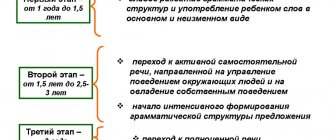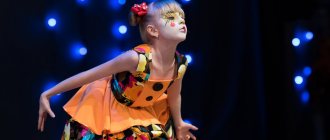Types of speech in Russian
Each text has a theme or main idea, what the author wanted to say. He can do this—express his position—in a variety of forms. Depending on the key in which he constructs his thought, types of speech are formed.
Types of speech are functional varieties of texts.
In total we can distinguish three types of speech:
- narration;
- description;
- reasoning.
Narration is the most common type of speech, both oral and written. Its purpose is to tell a story. In a story, all events must be logically connected; it must have a clear beginning and end. The listener or reader must have a good understanding of the main idea of the story, who it happens to, where and when. The main feature of this type of speech is the large number of verbs.
Description, as the name implies, is needed in order to describe an object or situation. Its main goal is to convey to the reader or listener the image that the author sees. Descriptions are usually full of adjectives and adverbs.
Reasoning is the type of speech that occurs least often. During reasoning, a person explains the reasons, expresses his thoughts and views about a problem.
It is very difficult to confuse types of speech with each other. They all have a specific, clearly defined function. If a person cannot understand what type of speech is in front of him, he should simply answer the question - for what purpose was the text written? If it's to tell a story, then it's storytelling. If the purpose is to show some object or phenomenon, then a description. If in order to convey a fresh idea to the reader, then reasoning.
Difference between speech types and speech styles
Speech types are very often confused with speech styles. In fact, these are two completely different phenomena.
Speech styles are a set of speech elements characteristic of a particular situation.
There are five of them in total:
- colloquial;
- art;
- journalistic;
- scientific;
- official business.
So, for example, in a conversational style you can use jargon and vernacular, while in other styles this is unacceptable. And the scientific style is characterized by general dryness, logic and accuracy.
Types of speech are a completely different matter. This is a way of presenting this or that material depending on its purpose.
Styles and types of speech are not directly correlated. So, for example, in a text written in an artistic style, there can be any sentences: narrative, descriptive, as well as reasoning. The same can be said about journalistic and conversational styles. In scientific and official business, descriptions still prevail.
Speech disorders.
Neuropsychologist A.R. Luria described five main disorders of oral speech activity, which were called aphasia.
Each type of aphasia is associated with dysfunction of the corresponding mechanisms of speech activity.
Thus, with motor aphasia,
the ability to produce articulate audible speech is impaired.
With sensory aphasia,
phonemic hearing decays, as a result of which a person cannot establish a connection between the sound composition of a word and its semantic meaning.
With semantic aphasia,
difficulties arise in understanding the semantic relationships between words.
As a result, the patient understands the meaning of individual words, but cannot connect them together. For example, he understands the meaning of the words “brother” and “father,” but cannot understand who “father’s brother” is. Violations of other types of speech activity are also possible. A writing disorder is called agraphia
. In this case, a person loses the ability to reproduce graphic images of words, although he retains sound speech.
Examples of similar educational works
According to MDK 03.02 Methodology for organizing various types of activities, communication and training ...
... activities, communication and education of children with mental retardation and speech development deficiencies ... people ... word, · lexical and grammatical games and exercises, · consolidation of vocabulary and grammar in coherent speech, · games for the development of... means of language 1. ...
Violation of predicative vocabulary in children with general speech underdevelopment and delay...
... in the process of speech activity, thoughts are formed and formulated [19]. One type of speech is internal speech, characterized by absolute predicativity. L. S. Vygotsky [3] emphasized that the development of verbal…
THINKING AS A FORM OF COGNITIVE ACTIVITY. DEVELOPMENT OF THINKING IN ONTOGENESIS
... SPEECH AND SPEECH ACTIVITY. TYPES OF SPEECH, MECHANISMS OF GENERATION AND UNDERSTANDING OF SPEECH 16 15. SPEECH AND COMMUNICATION. FUNCTIONS OF SPEECH 17 16. SPEECH AND THINKING. THEORIES OF THE ORIGIN OF SPEECH 18 17. DEVELOPMENT OF SPEECH ... human thinking; 2) ... objects of the external world. ... signs, language and ...
L.S. Vygotsky about the relationship between thought, speech and language and the psychological organization of generation...
... appropriation of the experience of speech activity and the transition of this experience from the outside to the inside. As a result of this process, the possibility of internal programming of a person’s actions and internal regulation of his behavior appears: a person acquires the ability...
Development of musical and creative abilities of children of middle preschool age in...
... the development and upbringing of a child, with the formation of his personality. The ability to be creative is something that has always been decisive in the human phenomenon itself. Activity, ... human activity, aimed either at generating an external product ...
Description. Structure and Features
As was said earlier and as is clear from the very name of this type of speech, a description was created in order to describe something, to give the most complete characteristics. It doesn’t matter what exactly: an object, a phenomenon or an event. Typically, this genre is used in fiction to immerse readers as deeply as possible into the world that the author creates.
Authors of commercial texts do not shy away from descriptions either. The brighter, more colorful and more profitable a product is described, the greater the likelihood of demand for it.
Descriptions can also be found in scientific literature. But if in works of art they will be more vivid and imaginative, then in textbooks and monographs they will be more strict, usually in the form of characteristics. The description can be presented in completely different forms.
You can describe different objects: both specific objects and a picture or atmosphere in general. Descriptions of people's appearance and verbal portraits are very common. The authors also periodically evaluate the object being described.
Types of description include:
- description of a person’s appearance (or portrait);
- description of the human condition;
- description of a person's character;
- description of the environment (most often nature);
- description of the area (city, village, locality);
- description of the item.
This type of speech is rich in adjectives, adverbs and various means of artistic expression: epithets, metaphors, hyperboles or litotes. Also in descriptions there are often rows of homogeneous members of a sentence. The verbs in the descriptions are minimal, as are any actions in principle. If they exist, they are mainly in the present tense and in an imperfect form. Sometimes they are introduced to give the reader a more complete picture, but they try not to overuse it.
Examples of text with description
To understand this type of speech even better, it is worth considering specific examples.
Portrait:
She was short, but at the same time very slender, feminine and charming. Her hair was light brown, her eyes were blue, and her lips were slightly swollen. Overall, Anna looked very pretty.
Description of nature:
Rowan is elegant from spring to autumn. Every day the berries on it become more orange and brighter. Until, finally, rowan bonfires flare up on the forest edge. They will burn for a long time, illuminating the forest with their cold flame, until noisy and nimble bands of thrushes swoop down on them for a merry feast.
...and types
Focusing on the reaction of listeners, the speaker can highlight the most important points, use comments, clarifications and repetitions. These features most characterize unprepared oral speech. The classification of speech on this basis contrasts it with another - prepared, existing in the form of lectures or reports.
This form is characterized by a clear structure and thoughtfulness. In a spontaneously pronounced text, typical of unprepared oral speech, there are many pauses, repetitions of individual words and sounds that do not carry any meaning (such as “uh-uh”, “here”, “means”), the structures intended for pronunciation are sometimes disrupted. In such speech there are more speech errors, short, incomplete and not always correct sentences, and fewer participial and participial phrases.
The types of oral speech also differ in functional varieties. It can be scientific, journalistic, artistic, colloquial, and also used in the official business sphere.
Narration. Design features
Narration is a type of speech that can be used to talk about certain events. The story can come from any person: both from the first and from the third (maybe from the second, but usually this is done for the sake of a literary experiment).
The narrative should be conducted logically and consistently. Any story must have all three basic stages: beginning, climax and denouement. The reader must understand the essence of the story, what the author wanted to tell him.
The narrative usually contains a large number of verbs that contribute to the development of the action. In general, this type of speech is very dynamic, and this is its main difference from the other two.
The presented type of speech can be divided into two subtypes: visual narration, which is characterized by changing images, whose purpose is to “show” the event, and informative. In this case, the text not only talks about the event, but also explains it and includes interesting facts.
Examples of narrative text
Narrative texts are found everywhere. Most of any books consist of them. Here is one example of narrative text:
I began to stroke the cat and thought how good my life was! The house is warm, cozy, smells of baking, the cat is purring. I could sit like this forever!
Monologue and dialogue. Examples and essence of concepts
Classification of speech according to the number of participants was undertaken in ancient times. The division into dialogues and monologues was used in such areas as logic, rhetoric, and philosophy. The term “polylogue” arose at the end of the 20th century and refers to a conversation involving more than two people.
A form such as dialogue is characterized by alternating statements from both interlocutors in direct connection with a specific situation. The statements themselves are called replicas. In terms of semantic load, dialogue is an exchange of opinions that depend on each other.
The entire dialogue and any of its parts can be perceived as a separate textual act. The structure of a dialogue includes parts called beginning, base and ending. The first of these uses generally accepted forms of speech etiquette, a greeting or an introductory remark in the form of a question or judgment.
Reasoning
Reasoning texts are quite complex in their design. First of all, you should understand why you need to write them in the first place.
The main task of such texts is to convey to the reader some idea, the author’s views on a particular problem. Therefore, he must initially formulate a thesis - the main idea of his text, what will be discussed further, then argue it in detail, citing evidence. At the end, the author must draw conclusions and consolidate everything that was said earlier.
Reasoning texts can be divided into three basic categories:
- Proof.
- Explanations.
- Reflections.
However, the main task of reasoning is to convince the reader of something, to show him a different point of view. Reasoning is characterized by enumeration, repetition and clarification.
Examples of text with reasoning
As an example of a text-reasoning, one can cite the philosophical notes of Lev Nikolaevich Tolstoy.
The totality of causes of phenomena is inaccessible to the human mind. But the need to find reasons is embedded in the human soul. And the human mind, without delving into the innumerability and complexity of the conditions of phenomena, of which each separately can be represented as a cause, grabs the first, most understandable convergence and says: this is the cause. In historical events (where the object of observation is the actions of people), the most primitive convergence seems to be the will of the gods, then the will of those people who stand in the most prominent historical place - historical heroes.
What is dialogue like?
The main part can be from very short to very long. Any dialogue tends to be continued. As an ending, cues of agreement, response, or standard speech etiquette (“goodbye” or “all the best”) are used.
In the sphere of colloquial speech, dialogue is considered everyday and is conducted using colloquial vocabulary. Here, a poor choice of words, repetitions, and deviations from literary norms are allowed. Such dialogue is characterized by emotions and expression, unevenness, variety of topics, and deviation from the main line of discussion.
Dialogue is also found in literary sources. Examples are communication between heroes, a novel in letters, or authentic correspondence of historical figures.
It may or may not be very informative. In the latter case, it consists mainly of speech forms and does not contain useful information. An informative dialogue is characterized by the need for communication in order to obtain new data.
Test. How do types of speech differ from each other?
- What part of speech is most often found in descriptions?
- a) adjective;
- b) adverbs;
- c) verbs.
- What are the characteristics of reasoning?
- a) dynamics and abundance of actions;
- b) the presence of numerous characteristics;
- c) statement of the thesis and its detailed analysis, expression of the author’s thoughts on a particular topic.
- What part of speech is most often found in narrative texts?
- a) noun;
- b) adjective;
- c) verbs.
Literature:
1. Akhutina T.V. Generation of speech. M., 1989.
2. Vygotsky L.S. Collected works. T. 2. M., 1982.
3. Zhinkin N.I. Mechanisms of speech. M., 1958.
4. Leontyev A.A. The word in speech activity. M., 1965.
5. Luria A.R. Language and consciousness. M., 1979.
6. Nemov R.S. Psychology. Book 1. General fundamentals of psychology. M., 1994.
7. Sokolov A.N. Inner speech and thinking. M., 1968.
8. Chomsky N. Language and thinking. M., 1972.
9. Ushakova T.N. etc. Human speech in communication. M., 1989.
Polylogue - what kind of animal?
The classification of speech styles has recently (end of the last century) been supplemented with the concept of polylogue. Even among linguists it has not yet come into widespread use. This is a conversation between several people at once. Situationally, it is closer to dialogue, as it unites listeners and speakers. There is polylogue in the forms of discussions, conversations, games, meetings. There is an exchange of information contributed by everyone, and everyone is aware of what is being discussed.
The rules by which a polylogue is constructed are as follows: participants are instructed to speak convincingly and quite briefly; everyone who composes it is obliged to follow the plot of the discussion and be attentive; it is customary to ask questions and clarify unclear points, as well as make the necessary objections. The polylogue must be conducted in a correct and friendly manner.









